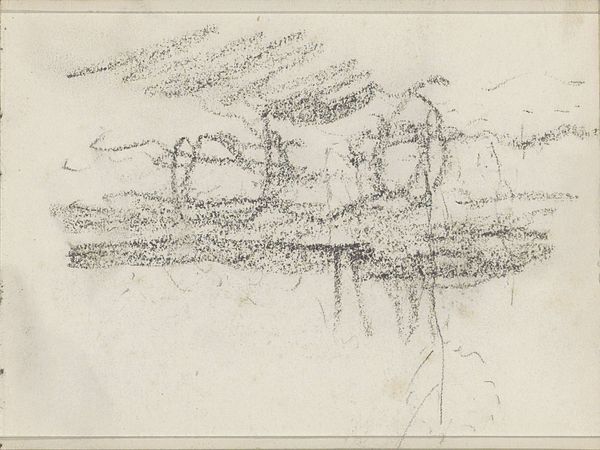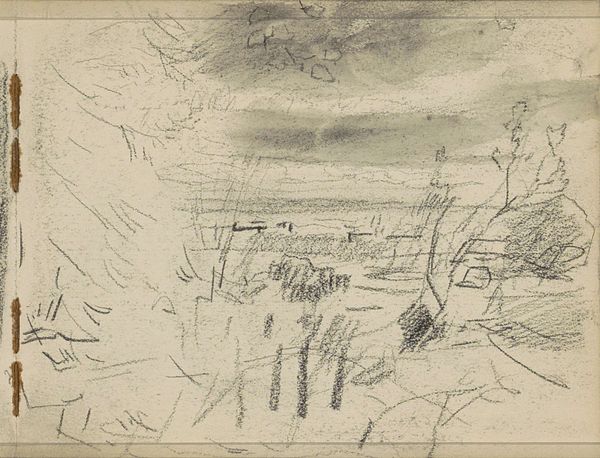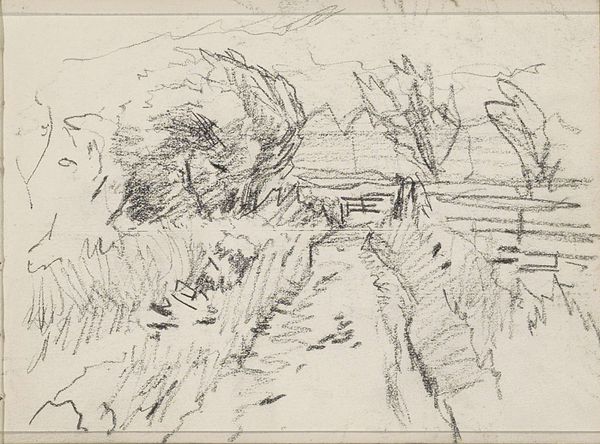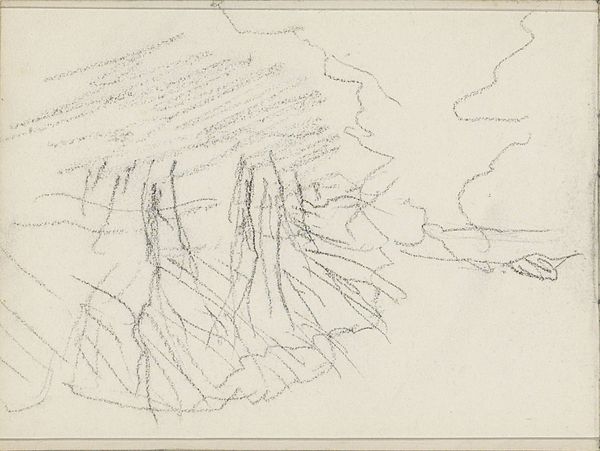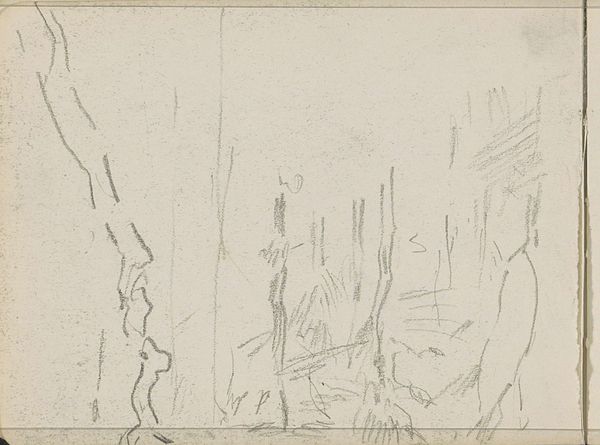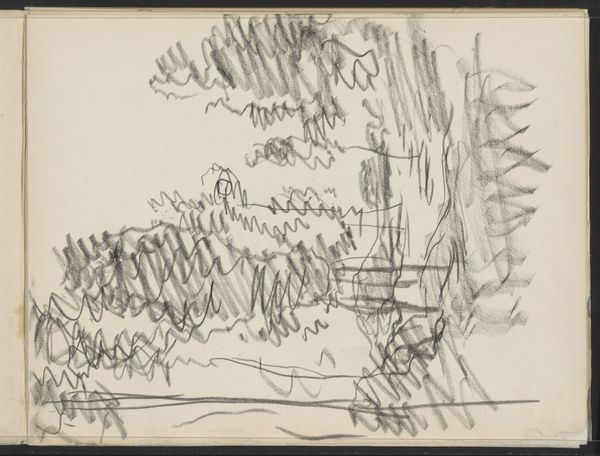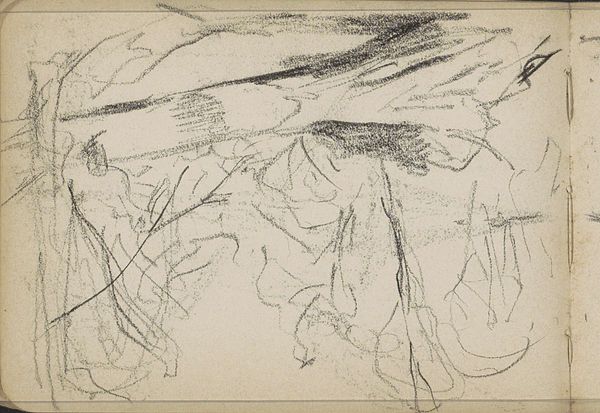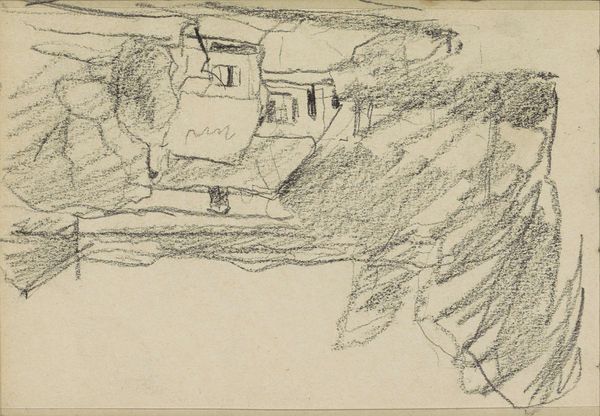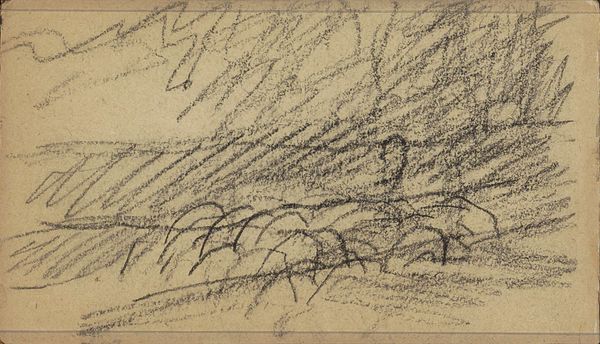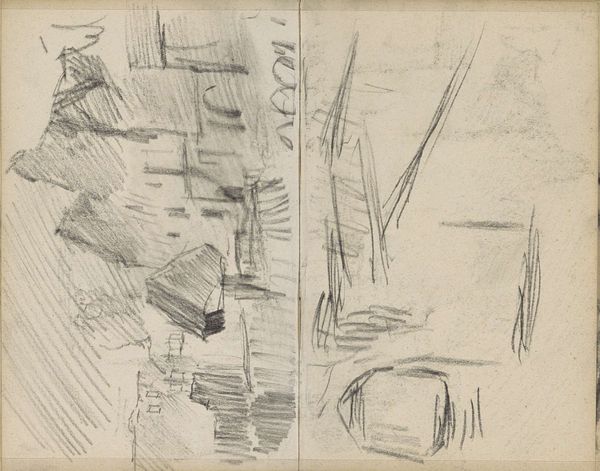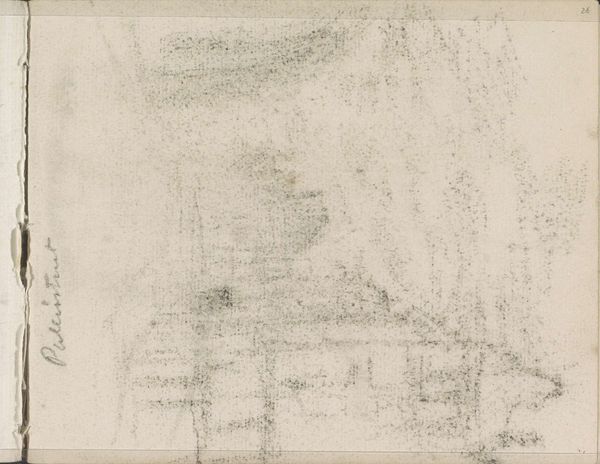
drawing, pencil
#
drawing
#
impressionism
#
pencil sketch
#
landscape
#
pencil
Copyright: Rijks Museum: Open Domain
Editor: This is "Boomstammen," a pencil drawing by Anton Mauve, dating from around 1881 to 1888. It looks like a quick sketch, and the repetition of lines gives it an almost rhythmic quality. What strikes you most about this piece? Curator: It’s tempting to see this as just a simple landscape study, but I wonder if we can also view it as Mauve grappling with the changing Dutch landscape during a period of rapid industrialization. Can the trees here also be a symbolic expression of the struggle to preserve nature amid the march of modernity? Editor: That’s an interesting angle. I was just seeing it as a straightforward impressionistic study of trees! The industrial context wasn’t immediately apparent to me. Curator: Consider Mauve's social circle. He was, after all, a relative of Van Gogh, who was deeply concerned with the plight of rural laborers. Do you see that the act of sketching "en plein air," on-site, connects him with both the immediacy of Impressionism and to his social environment? Does that resonate here? Editor: It does. The sketch almost feels like an act of witnessing, a way of documenting something vanishing. So it's about more than just capturing light and form? Curator: Exactly! We need to examine not just the aesthetic qualities but also its intersectional connection to industrial transformation, class consciousness, and environmental concerns, making the study deeply connected to the issues of his time and even ours. Editor: I've never really considered how landscape art could engage with social justice. I will remember this, thank you! Curator: My pleasure! This dialogue reminded me of how intertwined artistic expression can be with societal shifts.
Comments
No comments
Be the first to comment and join the conversation on the ultimate creative platform.
